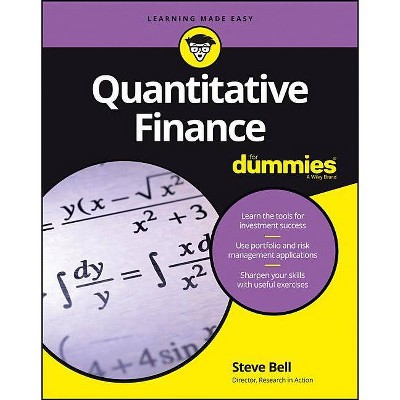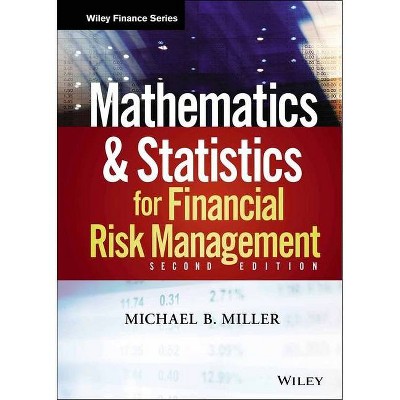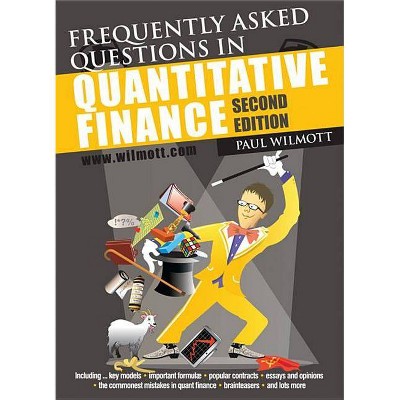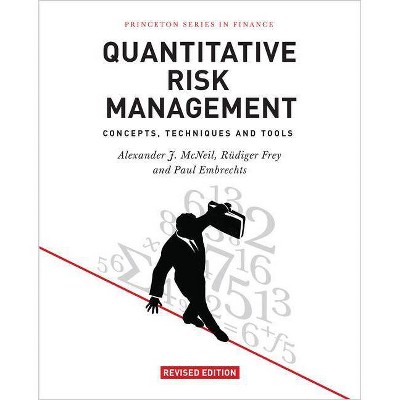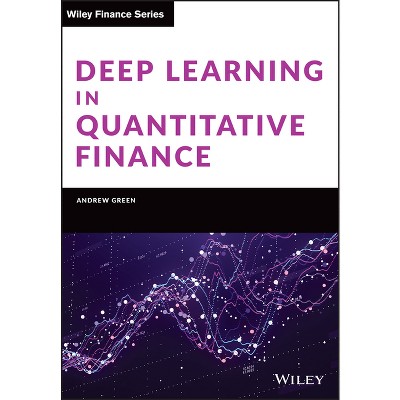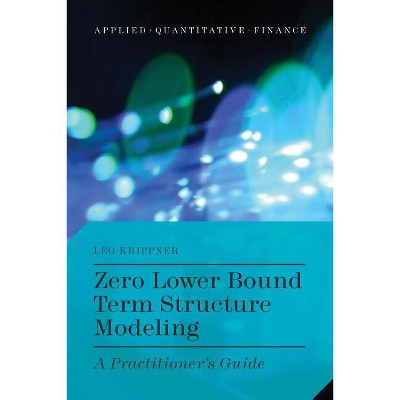Quantitative Finance - (Statistics in Practice) by Maria Cristina Mariani & Ionut Florescu (Hardcover)

About this item
Highlights
- Presents a multitude of topics relevant to the quantitative finance community by combining the best of the theory with the usefulness of applications Written by accomplished teachers and researchers in the field, this book presents quantitative finance theory through applications to specific practical problems and comes with accompanying coding techniques in R and MATLAB, and some generic pseudo-algorithms to modern finance.
- About the Author: MARIA C. MARIANI, PHD, is Shigeko K. Chan Distinguished Professor and Chair in the Department of Mathematical Sciences at The University of Texas at El Paso.
- 496 Pages
- Business + Money Management, Finance
- Series Name: Statistics in Practice
Description
About the Book
"This book falls broadly in the area of financial mathematics. It presents a multitude of topics that are relevant to the quantitative finance community. Experts in teaching and active in research, the authors aim to discuss theory in the context of applications to specific practical problems. The book is complete with different coding techniques in R and MATLAB and generic pseudo-algorithms to modern finance. Starting with the theoretical backdrop needed from probability and stochastic processes and the description of financial instruments priced throughout the book, the classical Black-Scholes-Merton model is, then, presented in a uniquely accessible and understandable way. Implied volatility, local volatility surfaces, and general methods of inverting partial differential equations (PDE's) are, then, discussed. Two fundamental ways of calculating the price of options and other derivatives are showcased along with a solid presentation of the usual topics in fixed income derivatives, classical models, portfolio management, and hedging portfolios. The book concludes with several new and advanced models from current literature such as nonlinear PDE's for stochastic volatility models in a transaction fee market and PDE's in a jump-diffusion with stochastic volatility models. There are over 300 examples and exercises that are appropriate for the beginning learner and the practicing financier"--Book Synopsis
Presents a multitude of topics relevant to the quantitative finance community by combining the best of the theory with the usefulness of applications
Written by accomplished teachers and researchers in the field, this book presents quantitative finance theory through applications to specific practical problems and comes with accompanying coding techniques in R and MATLAB, and some generic pseudo-algorithms to modern finance. It also offers over 300 examples and exercises that are appropriate for the beginning student as well as the practitioner in the field.
The Quantitative Finance book is divided into four parts. Part One begins by providing readers with the theoretical backdrop needed from probability and stochastic processes. We also present some useful finance concepts used throughout the book. In part two of the book we present the classical Black-Scholes-Merton model in a uniquely accessible and understandable way. Implied volatility as well as local volatility surfaces are also discussed. Next, solutions to Partial Differential Equations (PDE), wavelets and Fourier transforms are presented. Several methodologies for pricing options namely, tree methods, finite difference method and Monte Carlo simulation methods are also discussed. We conclude this part with a discussion on stochastic differential equations (SDE's). In the third part of this book, several new and advanced models from current literature such as general Lvy processes, nonlinear PDE's for stochastic volatility models in a transaction fee market, PDE's in a jump-diffusion with stochastic volatility models and factor and copulas models are discussed. In part four of the book, we conclude with a solid presentation of the typical topics in fixed income securities and derivatives. We discuss models for pricing bonds market, marketable securities, credit default swaps (CDS) and securitizations.
- Classroom-tested over a three-year period with the input of students and experienced practitioners
- Emphasizes the volatility of financial analyses and interpretations
- Weaves theory with application throughout the book
- Utilizes R and MATLAB software programs
- Presents pseudo-algorithms for readers who do not have access to any particular programming system
- Supplemented with extensive author-maintained web site that includes helpful teaching hints, data sets, software programs, and additional content
Quantitative Finance is an ideal textbook for upper-undergraduate and beginning graduate students in statistics, financial engineering, quantitative finance, and mathematical finance programs. It will also appeal to practitioners in the same fields.
From the Back Cover
PRESENTS A MULTITUDE OF TOPICS RELEVANT TO THE QUANTITATIVE FINANCE COMMUNITY BY COMBINING THE BEST OF THE THEORY WITH THE USEFULNESS OF APPLICATIONS
Written by accomplished teachers and researchers in the field, this book presents quantitative finance theory through applications to specific practical problems, and comes with accompanying coding techniques in R and MATLAB, and some generic pseudo-algorithms to modern finance. It also offers over 300 examples and exercises that are appropriate for the beginning student as well as the practioner in the field.
The Quantitative Finance book is divided into four parts. Part One begins by providing readers with the theoretical backdrop needed from probability and stochastic processes. We also present some useful finance concepts used throughout the book. In part two of the book we present the classical Black-Scholes-Merton model in a uniquely accessible and understandable way. Implied volatility as well as local volatility surfaces are also discussed. Next, solutions to Partial Differential Equations (PDEs), wavelets and Fourier transforms are presented. Several methodologies for pricing options namely, tree methods, finite difference method, and Monte Carlo simulation methods are also discussed. We conclude this part with a discussion on stochastic differential equations (SDEs). In the third part of this book, several new and advanced models from current literature such as general Lévy processes, nonlinear PDEs for stochastic volatility models in a transaction fee market, PDEs in a jump-diffusion with stochastic volatility models, and factor and copulas models are discussed. In part four of the book, we conclude with a solid presentation of the typical topics in fixed income securities and derivatives. We discuss models for pricing bonds market, marketable securities, credit default swaps (CDS), and securitizations.
- Classroom-tested over a three-year period with the input of students and experienced practitioners
- Emphasizes the volatility of financial analyses and interpretations
- Weaves theory with application throughout the book
- Utilizes R and MATLAB software programs
- Presents pseudo-algorithms for readers who do not have access to any particular programming system
- Supplemented with extensive author-maintained web site that includes helpful teaching hints, data sets, software programs, and additional content
Quantitative Finance is an ideal textbook for upper-undergraduate and beginning graduate students in statistics, financial engineering, quantitative finance, and mathematical finance programs. It will also appeal to practitioners in the same fields.
About the Author
MARIA C. MARIANI, PHD, is Shigeko K. Chan Distinguished Professor and Chair in the Department of Mathematical Sciences at The University of Texas at El Paso. She currently focuses her research on mathematical finance, stochastic and non-linear differential equations, geophysics, and numerical methods. Dr. Mariani is co-organizer of the Conference on Modeling High-Frequency Data in Finance.
IONUT FLORESCU, PHD, is Research Professor in Financial Engineering at Stevens Institute of Technology. He serves as Director of the Hanlon Laboratories as well as Director of the Financial Analytics program. His main research is in probability and stochastic processes and applications to domains such as finance, computer vision, robotics, earthquake studies, weather studies, and many more. Dr. Florescu is lead organizer of the Conference on Modeling High-Frequency Data in Finance.
